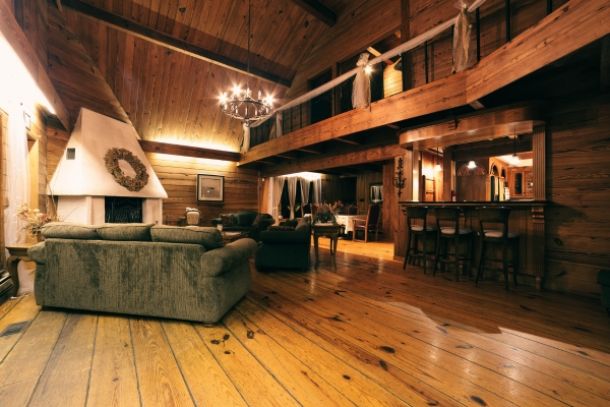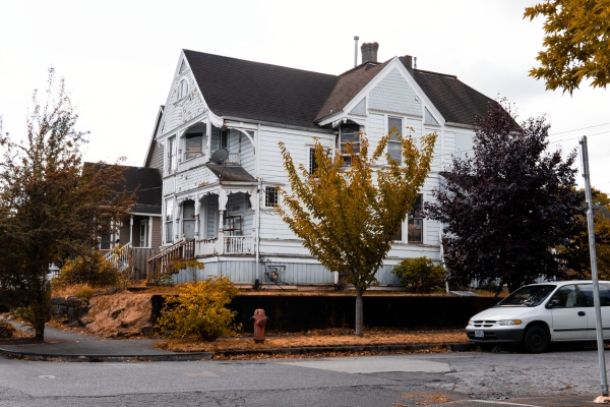From Logs to Living: Building Wooden Homes
From Logs to Living: Building Wooden Homes
Building a wooden home from logs is a journey that transforms raw nature into a refined, livable space. “From Logs to Living: Building Wooden Homes” explores the process of turning natural logs into a fully functional home that celebrates the beauty and strength of wood. This comprehensive guide delves into each step—from selecting the right logs to finishing touches that enhance both durability and aesthetic appeal—ensuring that your wooden home becomes a warm, inviting haven.
Introduction
Wood has been a foundational building material for centuries, and log homes continue to captivate with their natural charm and sustainability. The process of building a wooden home from logs involves careful planning, precise construction techniques, and an appreciation for the material’s natural properties. This guide is designed to help DIY enthusiasts and self-builders navigate the complexities of log home construction, offering insights into material selection, design, construction methods, and finishing techniques.
Selecting and Preparing the Logs
Choosing the Right Logs:
The first step in building a log home is selecting logs that are structurally sound and visually appealing. Species such as pine, cedar, and spruce are popular due to their workability and natural resistance to decay. When selecting logs, consider factors like diameter, moisture content, and overall quality. Logs should be well-seasoned to reduce shrinkage and minimize the risk of cracking.
Preparation and Treatment:
Proper preparation is critical to ensure the longevity of your log home. This involves stripping bark if desired, cutting the logs to precise lengths, and treating them with natural preservatives or eco-friendly sealants. These treatments protect against insects, moisture, and UV damage while maintaining the wood’s natural appearance.
Design Considerations and Planning
Blueprints and Layout:
Developing detailed blueprints is essential for a successful project. Consider the layout carefully—plan the number and size of rooms, the location of windows and doors, and the overall flow of the house. Log homes typically embrace an open floor plan that maximizes the natural light and warmth of the wood. Work with architects or utilize design software to create precise plans that reflect your vision.
Foundation and Structural Integrity:
The foundation must be robust enough to support the weight and characteristics of log construction. Options include concrete slabs or pier and beam systems, depending on your terrain and budget. A well-designed foundation minimizes movement and helps maintain the structural integrity of the log walls. Ensure proper drainage around the foundation to prevent moisture issues that could compromise the logs over time.
Construction Techniques
Stacking and Interlocking Logs:
One of the most distinctive aspects of log homes is the method of stacking logs. Traditional techniques involve interlocking the logs at the corners using notches such as dovetail or saddle notches. These joinery methods ensure stability and reduce gaps between logs. Modern builders may also incorporate metal fasteners or chinking materials to seal any spaces and enhance insulation.
Framing and Integration:
While the logs form the primary structure, additional framing may be required for windows, doors, and interior partitions. Use treated lumber to create frames that integrate seamlessly with the log structure. Precision in cutting and fitting is vital—laser levels and digital measuring tools can ensure that every log aligns perfectly, contributing to both strength and visual consistency.
Insulation, Windows, and Roofing
Enhancing Energy Efficiency:
Although logs provide natural insulation, additional measures can improve energy efficiency. Insulating materials may be added in critical areas such as the roof and floor. Consider modern insulation techniques that work in harmony with the natural log structure to maintain a comfortable indoor climate throughout the seasons.
Windows and Doors:
Log homes benefit from large, energy-efficient windows that frame the surrounding landscape. Select windows and doors with proper sealing and thermal performance to prevent drafts and maintain the home’s energy efficiency. The natural contrast between the solid wood logs and the sleek modern fixtures can create a stunning visual effect.
Roofing Solutions:
A pitched roof is common in log home construction, designed to shed snow and rain effectively. Choose roofing materials that complement the rustic aesthetic while providing long-term durability. Whether opting for traditional wooden shingles or modern metal panels, ensure the roof is installed with precision to create a watertight barrier.
Interior Finishing and Aesthetic Touches
Exposing Natural Beauty:
The interior of a log home should celebrate the natural beauty of wood. Leave some log surfaces exposed to showcase their unique grain and texture. Interior finishes can include natural plasters, reclaimed wood accents, and handcrafted details that highlight the organic character of the home.
Modern Comforts:
Integrate modern amenities seamlessly into the traditional log structure. Custom cabinetry, energy-efficient lighting, and contemporary fixtures can enhance functionality without detracting from the rustic charm. Thoughtful interior design ensures that the log home is both comfortable and visually cohesive.
Maintenance and Longevity
Routine Inspections:
Log homes require ongoing maintenance to preserve their natural beauty and structural integrity. Regularly inspect for signs of moisture, insect activity, and chinking deterioration. Addressing issues promptly prevents minor problems from escalating into costly repairs.
Seasonal Upkeep:
Establish a seasonal maintenance routine, including cleaning gutters, resealing exposed wood surfaces, and checking the condition of the roof. A proactive maintenance plan will help ensure that your log home remains a safe, energy-efficient, and attractive living space for many years.
Conclusion
From raw logs to a warm, inviting home, the journey of building a log home is as much about preserving natural beauty as it is about creating a durable structure. By selecting the right logs, planning meticulously, employing precise construction techniques, and committing to regular maintenance, you can transform natural timber into a living space that stands the test of time. Embrace the process, celebrate the craftsmanship, and enjoy the unique blend of tradition and modern comfort that a log home offers.


